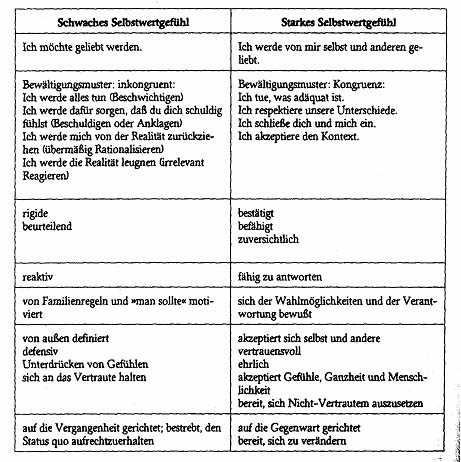Self and Self-Esteem
All people strive for the wholeness of their self. Virginia Satir viewed the concept of the self systemically. For her it was a continuous, dynamic interplay of different levels. She considered physical, intrapsychic, spiritual, interpersonal, contextual, and social factors equally.
By self-esteem she meant the ideas and feelings we have developed about ourselves over the course of our lives.
She observed that the majority of human problems stem from low self-esteem. At the same time, she also found that most people have very low self-esteem.
Someone with low self-esteem does not value or appreciate themselves and then expects the same from others. They virtually expect to be deceived or betrayed. Through this expectation they bring about their worst fears (self-fulfilling prophecy). To protect themselves, they hide behind a wall of mistrust and sink into isolation and loneliness. It becomes difficult for them to see themselves clearly, as they move further away from themselves and from others.

Our self-esteem appears to depend on how we were treated in our family of origin during the first five to six years of life.
The feedback we received about ourselves and our behavior during this time shapes our current feelings toward ourselves and thus our way of facing challenges and our ability to communicate.
Parents can therefore influence their child’s self-esteem in a decisive way through their communication. The big problem is that most people are not aware of the peculiarities of their communication patterns, and so good intentions by parents are often undermined by inadequate nonverbal behavior.
Such destructive interaction patterns are then frequently passed down from generation to generation. However, Virginia Satir believed that these learned interaction patterns can certainly be unlearned. She was convinced that everyone can increase their self-esteem and learn to recognize and work through destructive interaction patterns.

 Deutsch
Deutsch English
English Français
Français 中文
中文 Español
Español नहीं
नहीं Русский
Русский